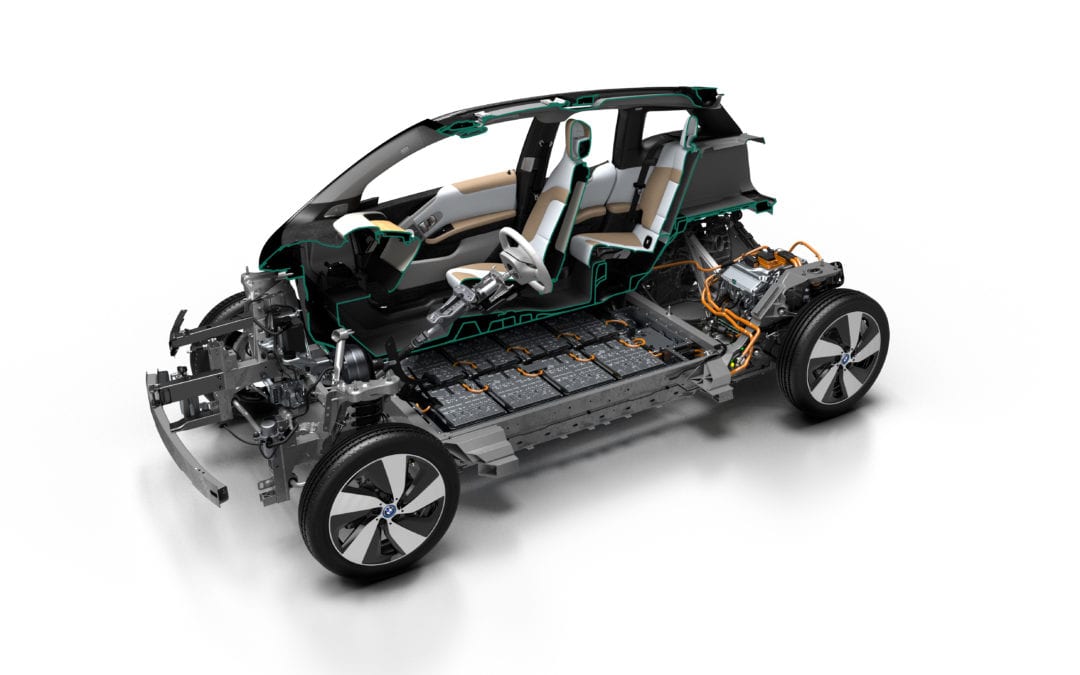Changing your driving style to improve the range of your Electric Vehicle and other battery management tips.
As promised in the blog “My first date with an Electric Vehicle (EV)” I will give a few pointers on efficient driving and battery management to increase range and battery life.
There is nothing more satisfying than leaving home with a range of 150 miles (240km) available, arriving at work 50 minutes later and 35km further with the available range still being the same as when you left. How is this possible you might ask? Well, it is a combination of the engineering and adapting your driving style to suit the battery system. On the engineering front, the reactive braking system charges the battery when you take your foot off the accelerator or when braking. It takes about a day to get used to this style of driving, but once you have mastered the art of anticipating the stop-start traffic you can add (or save) about 15% on the range available from your battery (figures based on my own experience). Not only do you charge your battery during reactive breaking, the engine also serves as a brake instead of you having to use the braking system. All in all the past week’s experience proved to me that an EV is the perfect vehicle for someone who spends a lot of time in traffic.
Changing one’s driving style to suit the battery system is slightly more difficult for most of us. EV’s certainly punishes aggressive driving styles, you can literarily see your battery being drained when accelerating, which is a pity. There is nothing more fun than leaving all the gas-guzzlers in your wake, especially on the pull-away at a robot. To really understand the power of an EV at a pull-away you just have to Google for YouTube clips “Tesla vs. …“ to see how a whole host of supercars struggles against an EV. My favorite is the 2016 Tesla Model X against the 2017 Bentley Bentayga. Make sure to watch the clip to the end. The BMW ConnectedDrive app certainly helps you to change your habits by informing you how efficiently you have completed each trip. My best was 82% and, dare I say it, my worst was 16%.
Here are some pointers on how changing your driving style will increase your range and improve battery life.
- Don’t cut corners. A recent study by MIT and the University of Birmingham concluded that taking shortcuts is ineffective. Not only does it add 5 to 8 minutes in your own driving time it also adds to congestion which increases driving time during rush hour on average with 33% for all commuters.
- Stick to the Highway. EV’s prefer smooth driving conditions. Stop-start driving, accelerating and driving up hills obviously take more out of your battery.
- Use your car comforts sparingly. Heating and cooling drains battery power, I experienced a 15% decrease in range by just changing the heating from 21 °C to 28 °C. Higher end technically spec’d vehicles like the BMW i3 enables you to set your departure time, allowing the cabin to be heated while still on charge. Most EV’s also comes with different drive settings, whereby for instance the heating system could be disabled.
- Temperature has an effect on battery discharge. Excessive heat or cold will influence battery life. Lithium-Ion batteries prefer charging and operating in cool temperatures. Normal lab testing and benchmarking is done at around 25 degrees Celsius (77 degrees Fahrenheit). Battery operation above or below the laboratory conditions will differ from the manufacturer’s stated range. Apart from changing your driving times away from the midday heat or morning cold, which is not practical in most cases, there is nothing you can do here except to take note that temperature will impact your range. Some EV’s include liquid cooling to protect the battery pack.
- State of Charge (SOC) is a big influence on the battery’s life. A battery should not be charged to full and does not like to be at 100% SOC for longer than an hour or two. You will get the most out of your battery pack by keeping the SOC between 30% and 80%.
Although its sounds restrictive but in reality driving style has a bigger impact on a gas-guzzler from a financial perspective. Apart from the fuel cost, parts need to be serviced and replaced much more frequently than that of EV’s. In the end, it’s all just a mindset change of which you will reap the benefits of both the value of the battery and charging cost.

Wynand Goosen
Contributor
Wynand studied his MBA in San Francisco where he was exposed to the fields of Service Science, Gamification, and Renewables, which he combined to create wattEV2buy and the award winning web app Ekoguru. Wynand is an energy storage expert and has modeled, designed and presented various solutions utilizing lithium-ion and other electrochemical technologies. In his spare time, Wynand is the author of a children’s book series and started a new project called “Career 180”.

